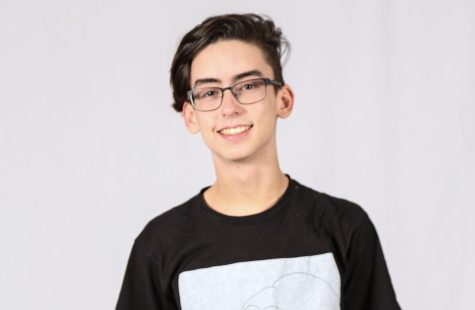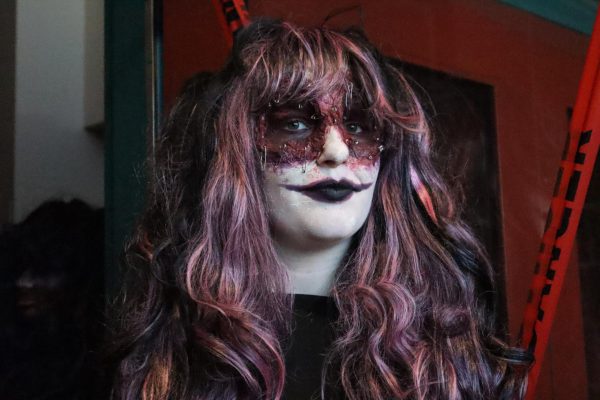Science class builds augmented reality sandbox
Earth, Wind and Fire class constructs AR sandbox to aid student understanding
Science teacher David Stricklen and senior Mila Luna work on constructing a portion of the sandbox. Once completed, they were able to use a digital projection system to simulate topography lines in the sand.
May 25, 2017
While some might think that sandboxes are only for small kids, science teacher David Stricklen has proved that they are fun and educational for all ages.
Using a combination of projection and remote sensing technology, students in Stricklen’s Earth, Wind and Fire course created what is called an Augmented Reality Sandbox. The system projects topographic maps onto the surface of the sand in a way that shows elevation and water filling in low lying areas as students reshape the sand into hills and valleys.
Thee AR Sandbox system uses a Kinect motion sensor and a high-end graphics processor to constantly scan the elevation of the sand to create the effect. The project cost around $1,200 but only cost $500 out of our pockets which was only possible because of a grant from the Texas Retired Teachers Foundation which was presented to Mr. Stricklen by Dr. Charles Akins last year, Stricklen said.
Stricklen said besides being a fun way to use technology, the project helped teach his students many skills.
“The augmented reality sandbox is a physical sandbox with actual sand, but there’s a program that projects a simulated waterflow and simulated topography lines into the box, all of that changes as students manipulate the sand inside box,” he said. “So that’s the augmented reality right there in a physical environment with a digital projection that responds to the changes made in the box.”
Stricklen and his students who were able help work on the project got the added bene t of exploring a multitude of different fields other than just topography while constructing the AR sandbox They learned skills such as math and engineering through building the physical box, computer science and computer engineering through working with the physical computer and the software so that it could run the power-intensive program.
Stricklen said that his students were able to learn a great deal of college readiness skills and teamwork skills working on this project.
“ They had to make a lot of choices of how we were going to make this happen, they really practiced some college and career and readiness standards when it comes to collaboration on projects.” he said. “And what’s in front of them now is to learn how to teach with this new tool”
Senior Jordan Marrero, one of Stricklen’s students who worked on the project, said she enjoyed the experience of building something using innovative technology. She said it opened up new ideas for how augmented reality technology can be used.
With the sandbox, Stricklen hopes that it can help encourage his students to take part in the teaching.
Marrero said the project helped her learn much more than what she would have if it had just been a book based lesson.
“You actually have hands on experience instead of just seeing something on paper, you can actually get your hands in this, you can form the land into whatever you want.” she said. “So you can create what you want you can physically learn how everything works and you can witness it happen too. I don’t think it could have gone any better.”
Junior Simon Carandang is a student who observed and got a hands on experience with the sandbox. Carandang was able to learn topography, rivers and watersheds with the short time that he had with the sandbox. He said that this shows just how effective the sandbox can be.
Carandang said that is amazing to see that Akins is doing and working with the same technology in a way that colleges such as the University of Texas are.
“I’ve been to UT, and seeing that they have this very same technology is a pretty cool thing to see that we can do and teach the same ways that UT is,” he said. “I just think it’s amazing that the students are producing projects that are almost at the same caliber as those at UT.”







